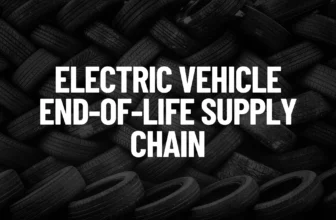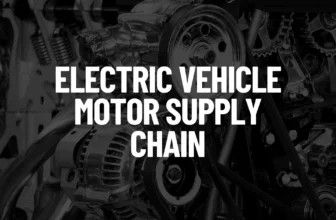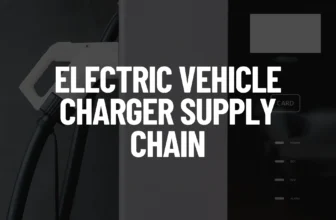The electric vehicle thermal equipment supply chain is crucial for managing heat in EVs, which affects battery performance, lifespan, and safety. This supply chain involves the manufacturing and distribution of thermal management systems for batteries and other EV components.
The thermal equipment supply chain plays a crucial role in the broader electric vehicle supply chain, focusing on materials, design, and testing to ensure efficient thermal management in EVs. With the growth of the electric vehicle market, the demand for innovative thermal management solutions has surged. In particular, the market for battery thermal management systems is experiencing rapid expansion, with a projected compound annual growth rate (CAGR) of 28.5% from 2020 to 2027.
Cooling methods used in electric vehicles include air convection, oil immersion, and the use of thermally conductive potting compounds. Liquid cooling is common in battery thermal management systems, with the high thermal conductivity of the heat transfer agent being crucial.
Table of Contents
Components Requiring Thermal Management in EVs
Effective thermal management is essential for several key systems within electric vehicles (EVs), including battery packs, electric motors, and power electronics like DC/DC converters. Additionally, components such as power-steering actuators, power brake actuators, and air conditioning compressors also require precise thermal regulation to ensure optimal performance and reliability. Proper thermal management in these systems is crucial for enhancing efficiency, extending component lifespan, and ensuring overall vehicle safety.
Battery Thermal Management Systems in EVs
Battery thermal management systems (BTMS) are critical for preventing thermal runaway and ensuring optimal battery performance, including longevity, range, efficiency, charging speed, and safety. These systems often incorporate liquid cooling, utilizing heat transfer agents like antifreeze and water mixtures to regulate temperature. Additionally, phase change materials (PCMs) are employed as passive components in liquid-cooled systems. By harnessing the latent heat during a material’s phase transition, PCMs efficiently absorb or release thermal energy, further enhancing temperature control and system stability.
Key Trends in Battery Thermal Management Systems in EVs
We reached out to professionals in the electric vehicle thermal equipment supply chain to gather their insights on the trends and key factors shaping the industry. Here are some of their perspectives:
Thermal Conductivity in Heat Transfer Fluids
Thermal conductivity is a crucial factor in the effectiveness of thermal management systems. High thermal conductivity in heat transfer fluids ensures that heat is efficiently moved away from battery cells, helping to maintain optimal operating temperatures. Additionally, potting compounds, which are used to encapsulate electrical components, must also exhibit high thermal conductivity to prevent overheating and maintain efficiency in electric motors.
The Importance of Thermal Modeling
Accurate thermal modeling is essential for designing effective battery thermal management systems (BTMS). Techniques like finite element analysis (FEA) are commonly employed to model the thermal behavior of battery cells and modules. This method relies on precise measurements of thermal conductivity, which are typically obtained through experimental testing. Such modeling helps engineers optimize BTMS design to ensure efficient heat dissipation and prevent thermal-related issues.
Materials and Composites Used in BTMS Development
The materials and composites used in EV batteries, enclosures, and cooling systems must be carefully selected for their thermal conductivity properties. These materials play a vital role in ensuring the accuracy of FEA models and the overall performance of BTMS. Understanding the thermal conductivity of these materials is key to developing efficient and reliable battery thermal management systems that support EV performance and longevity.
Challenges in the Electric Vehicle Thermal Equipment Supply Chain
Addressing challenges in the EV thermal equipment supply chain is critical to developing high-performance, reliable thermal management solutions that can meet the growing demand for electric vehicles. Experts we consulted emphasized the importance of overcoming these obstacles to support the industry’s expansion. They highlighted that advancements in materials, precise thermal testing, and cutting-edge manufacturing techniques are essential to ensuring the long-term success and sustainability of the EV sector.
Developing High Thermal Conductivity Materials
A primary challenge in the electric vehicle (EV) thermal equipment supply chain is the development of materials with high thermal conductivity, especially for potting compounds. These compounds are used to encapsulate electrical components and must be infused with thermally conductive agents to ensure efficient heat dissipation. Without high thermal conductivity, these materials may fail to prevent overheating, which can compromise the performance and safety of EV systems, such as electric motors and power electronics.
Accurate Measurement of Thermal Conductivity
Accurate thermal conductivity measurements of materials are critical for designing effective thermal management systems. Precise data is required to select the right materials for use in battery enclosures, cooling systems, and potting compounds. Without reliable measurements, there is a risk of using suboptimal materials that do not meet the thermal performance standards necessary for EV systems. This lack of accurate testing methods can hinder the development of advanced and efficient thermal management solutions.
Ensuring Uniform Distribution of Conductive Fillers
Another significant challenge in the EV thermal equipment supply chain is ensuring the uniform distribution of thermally conductive fillers in potting compounds. Uneven distribution can result in hot spots, where heat is not effectively managed, leading to potential overheating or component failure. Achieving consistent distribution requires precise manufacturing processes and stringent quality control. Any deviation in the filler distribution can lead to inefficient heat dissipation, compromising the integrity and safety of the entire system.
As a professional in the Electric Vehicle (EV) thermal equipment supply chain, your expertise and insights are invaluable in enhancing the impact of this blog.
I invite you to collaborate by sharing your knowledge, real-world experiences, and case studies. Together, we can delve into the complexities of the EV thermal equipment supply chain, providing actionable insights, innovative solutions, and best practices that will drive the industry forward.
If you’ve found my content valuable in your work within the EV thermal equipment supply chain, a letter of recommendation would be greatly appreciated. Your support will not only inspire me but also enable me to make meaningful contributions to the growth and efficiency of the EV sector.
Let’s work together to shape the future of the EV thermal equipment supply chain and strengthen the knowledge base that underpins its continued evolution.
Feel free to reach out to me via email at james@electricvehiclegeek.com.
Thank you for your engagement and for being a vital part of this journey!






